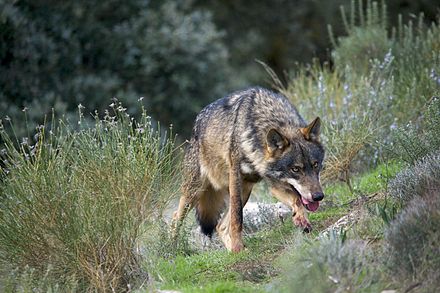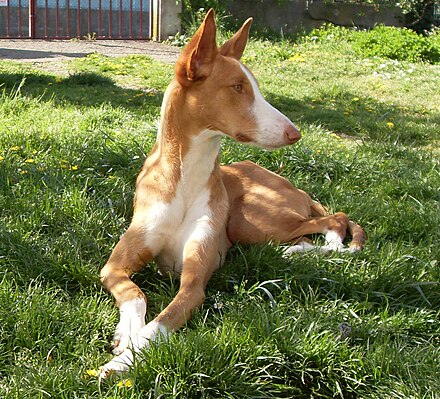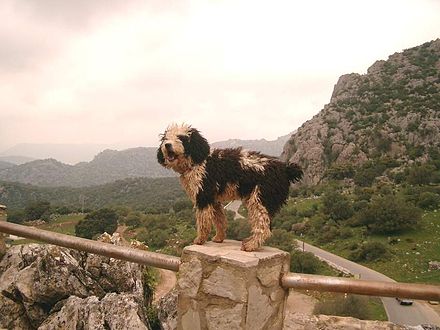Valencia, Spain
|
Areas Page Editors: please follow the Guidelines, whether you are editing an in-game area or World Territory. |
Valencia is a port city on the Mediterranean sea. It is comprised of several districts and satellite towns surrounding the city proper. Valencia is a significant port of trade, as it has a direct route to Madrid, where goods can then be distributed on foot to Lisbon or into the mainland. It might be the closest port on the Iberian peninsula to Eivissa. The city has maintained its population in part because the buildings that remained from ancient civilizations are easier for luperci to maintain, and because the proximity to the Turia River and Albufera lagoon provide fresh water and ample prey to eat.
|
Basics | |||
|
About |
Statistics |
Families |
Flag |
|
|
| |
On this page... (hide)
- 1. Culture
- 2. Geography
- 2.1 Climate
- 2.2 Flora and Fauna
- 2.3 Places of Interest
- 3. History
- 4. Key Families
- 5. Significance
- 6. More Reference
1. Culture
Inhabitants co-operate as a large pack with ranks similar to social hierarchy during the medieval period. While the majority are lower-class citizens, those who work hard and have exceptional skill sets tend to be rewarded with higher ranks. Those belonging to the upper echelons of society are exclusively members of the founding family. Historically, the alpha of the pack rotates between chosen members of the five original families; when one dies or abdicates the throne, the heir of the next family in line will ascend as alpha. Within the last several years, a wolfdog prince from a kingdom of wolves rapidly expanding across the Iberian Peninsula has taken over as alpha of the pack, changing very little of their ways, but increasing trade over land and sea.
While most of the luperci in the area seem to be at least modestly well off, and even travelers are shown hospitality, there are certain ones that are treated with hostility. It is extremely dangerous for jackals to pass through without being accompanied by a luperci that appears to be either dog or wolf. Those who have been ostracized by the pack in Valencia, either due to illness or unfortunate circumstance, may also experience violence from others. Old and wealthy families often own a jackal slave or two; these ones are treated with due respect towards property belonging to another luperci, only when it is required.
1.1 Trade
Valencia has a massive temporary population due to trade along the coast, into Madrid, and across the Mediterranean Sea. Any trade crossing the Atlantic ocean is sent to Lisbon first, while large quantities of goods are usually ferried to Barcelona for distribution towards Paris. Although they rely heavily on trade through their port, their primary focus is on land trade to Madrid, as well as to other luperci settlements across Spain, Portugal, and France. While the main language is Catalan (Valencian) and Spanish, used almost interchangeably, because there is so much trade within the area, many speak multiple languages, including Portuguese, Arabic, and French. Very wealthy merchant families may also speak English, Italian, and German. It is not uncommon to see many cultures celebrated among the diverse groups.
Sea
The port has remained operational, although much of it has fallen into disrepair for lack of use. What was once one of the busiest harbors in Europe now lags behind Lisbon and Barcelona. Fishing and sea trade comprise the bulk of the economy, and the gulf is often speckled with small fishing boats. Large, wooden ships are not an uncommon sight. Agriculture is another important export, and oils and wines can often be traded for significant profit. Minerals are occasionally exported, typically within Europe, for distribution among those who are capable of smiting or refining metals.
Land
Trade over land is somewhat limited due to the peninsula's non-central location. Luperci who do not have access to boats, or who simply do not sail, often travel along the overgrown roads that flanks the coast. From Valencia, travelers can either follow the remains of either the highway or railway into the heart of the country, Madrid. Many use horses, mules, or donkeys, to transport their goods and wares.
1.2 Species
Inhabitants are predominantly dogs, with five distinct landrace groups assigned by physical appearance: el cavall, el guardià, el pastor, l'amic, and l'extermidador. Due to strict social hierarchy, the appearance of unique breeds tends to be preserved better than in other areas. All locals are typically well suited to survive in the hot, dry climate, and defects such as hairlessness or thick coats are quickly bred out. Immigrants or travelers from Madrid or Barcelona are more likely to be Iberian wolves. Some interbreeding among inhabitants has created a small population of wolfdog hybrids. Jackals, who are typically enslaved in the area, are rarely seen among the permanent population. Certain sub-species of canines (those that are more common on other continents, such as Malamutes) are almost never found in Valencia simply because they are not a major global trade port, and there is not a significant amount of travel into the peninsula otherwise.
Luperci
Virtually all canines in the area are luperci, and non-luperci are either chased out, killed, or infected. Because fishing is a major industry, most utilize their optime form, and as a result, the culture is highly humanized. Valencians rarely use their lupus form, which is often associated with lower class and rural canines, but may present themselves in various secui forms.
1.3 Social Hierarchy
Luperci in Spain are one of the many regions wherein society is based on a rigid caste system; there is no social mobility, as social class is based strictly on physical appearance. Originally, it was divided into three groups: Wolves, dogs, and jackals. The group of dogs was eventually further separated into five distinct groups, with each member typically pre-assigned to perform certain roles or tasks within the pack. These groups are maintained through endogamy, and individuals are discouraged from mating outside of their respective group. Social deviance is typically met with violence. Those who breed between different social groups risk separating their family.
Wolves
Wolves, as apex predators, hold the highest rank, el Sobirà. They are unpopular among the majority of the population, but they have the biggest teeth, and can maintain their status at the top of the social chain with relative ease.
Dogs
Dogs are divided into several categories, based on the roles their ancestors were carefully bred for, based on their ability to provide food and defend it as well. The highest ranking dogs, el Cavall, are those that look like hounds, typically identified by their long legs and lithe bodies. Second are the giant dogs of molosser descent, el Guardià. Next are el Pastor, the clever herding dogs who use their cunning to hold up against those who are faster and stronger. The bulk of the population is comprised of the last two types of dogs, notably whose ancestors relied heavily on their companionship with humans. In the end, their loyalty gained them nothing. The fourth group, L'amic are usually floppy eared, and are the type of dogs that may have once been used to detect scents or to retrieve prey shot down by a gun. Finally, the lowliest group among the dogs are L'exterminador, the small terriers, for although they can feast on rats in abundance, they cannot protect their food from the larger dogs if they are not quick enough to hide it first!
Jackals
Inferior even to those are jackals, who are typically traded into the area as slaves, for they are not native to the country. It is not possible to change castes, as they are based strictly on appearance. However, any luperci who are put into slavery (not servitude) are treated the same as jackals, and even referred to by the name, el Xacal. Canines who have immigrated into the region and do not resemble any native landraces, as well as hybrids or mixed breeds, will belong to the caste they most resemble, and are occasionally referred to as L'altre; a distinction of inferiority.
1.4 Fashion
It is often too hot for most luperci to wear much in the way of clothing. A simple poncho or sarong is enough to suffice most luperci. Some may opt to wear a thin cotton shirt with trousers, although those who perform laborious duties will often forego clothing entirely. Women of high status may opt to wear a mantilla, a veil or scarf worn over the head, with a tortoise-shell comb to hold it in place. Similarly, men may wear short jackets with a high, colourful waist band. During festivals, women who can afford it will wear ornate dresses with colourful frills that billow out when the wearer twirls. Headpieces are common among all luperci, ranging from scarves, flowers, and various styles of hats that offer both functionality and fashion.
1.5 Sports
Ratting is a sporting event popular across Europe. Based off of rat hunting, it has evolved to be played in Optime form. Similar to the game of tag, a hound will chase a Luperci who takes on the role of the rat. Players run within a designated course, leaping across and vaulting over various obstacles in the process. The game ends when the rat reaches the end of the course, or is caught by the hunter. In the area of Valencia, the rat is referred to as el conill as homage to the history of hounds being used to hunt rabbits in the area. Participants with an aptitude for selective shifting are able to utilize the best features of their bipedal and quadrupedal forms to their advantage. Slaves are forbidden from playing this sport.
1.6 Religion
Lorem ipsum dolor sit amet, consectetur adipiscing elit. Aliquam fermentum risus felis, vitae malesuada massa semper placerat. Morbi luctus justo enim, ut egestas dolor imperdiet eget. Fusce ac efficitur dui. Sed eu aliquam purus, eget ullamcorper ipsum. Proin consectetur arcu nec dui dignissim, ut faucibus mi ultricies. Cras elementum est placerat sagittis pretium. Curabitur elementum dictum justo, ut facilisis nunc hendrerit sit amet. Nulla facilisi. Morbi et urna vel nibh consequat placerat. Phasellus suscipit ut ex ac ornare. Donec vel mollis augue.
2. Geography

L'Albufera is a nearby freshwater lagoon.
The original city was built along the Turia river, which flows from the mountains to the northwest. Valencia is the river's final destination, guided by crumbling canals through the urban centre, before it pours out into the Gulf of Valencia, and from there, the Mediterranean sea. The land adjacent to the gulf is fertile, allowing some luperci to grow modest crops of rice and citrus orchards. L'Albufera de València is a freshwater lagoon just 11 km (7 mi) south of the city, and is the largest lake in Spain.
Many buildings have collapsed from disuse, or from being picked over by luperci looking for useful materials. Historic structures made with rudimentary architectural technology are the buildings that are most likely to be occupied and maintained by luperci.
2.1 Climate
The area experiences long summers that tend to be range from warm to hot, and very mild winters with temperatures above freezing. As a coastal city, it experiences milder temperatures without great variation. The days tend to be longer than average, compared to other places in Europe. There is very little precipitation in the region, and the rainy season is typically from July to Octobre.
2.2 Flora and Fauna
Lorem ipsum dolor sit amet, consectetur adipiscing elit. Aliquam fermentum risus felis, vitae malesuada massa semper placerat. Morbi luctus justo enim, ut egestas dolor imperdiet eget. Fusce ac efficitur dui. Sed eu aliquam purus, eget ullamcorper ipsum. Proin consectetur arcu nec dui dignissim, ut faucibus mi ultricies. Cras elementum est placerat sagittis pretium. Curabitur elementum dictum justo, ut facilisis nunc hendrerit sit amet. Nulla facilisi. Morbi et urna vel nibh consequat placerat. Phasellus suscipit ut ex ac ornare. Donec vel mollis augue.
2.3 Places of Interest
Lorem ipsum dolor sit amet, consectetur adipiscing elit. Aliquam fermentum risus felis, vitae malesuada massa semper placerat. Morbi luctus justo enim, ut egestas dolor imperdiet eget. Fusce ac efficitur dui. Sed eu aliquam purus, eget ullamcorper ipsum. Proin consectetur arcu nec dui dignissim, ut faucibus mi ultricies. Cras elementum est placerat sagittis pretium. Curabitur elementum dictum justo, ut facilisis nunc hendrerit sit amet. Nulla facilisi. Morbi et urna vel nibh consequat placerat. Phasellus suscipit ut ex ac ornare. Donec vel mollis augue.
- La Lonja de la Seda
- Valencia Cathedral
- Casco Histórico
- Plaza de Toros de Valencia
3. History
Dogs have inhabited the city of Valencia for as long as humans have, and continued to proudly retain citizenship even after their demise. In the early years, turmoil and uncertainty caused devastation across both the population as well as the physical environment. While the dogs dealt with the consequences of a massive loss of life as well as sudden and total independence from humans, the city begun to fall into a state of disrepair.
As the newly created luperci became increasingly aware of how they could use their optime forms to manipulate their environment and the things within it, they also learned that they could manipulate those things to their advantage. The neglected city had become a dangerous place to live in, surrounded by sagging buildings and crumbling infrastructure, but few were able to find better homes beyond the city. Other urban towns were both occupied and in a similar state, and the territorial wolves roaming the wilderness inland were known to slaughter the small packs of dogs that were foolish enough to try to carve out a section of land for themselves.
Having no better option for survival, the surviving luperci combined their efforts to create a sustainable community within Valencia. It was a clever family of herding dogs, said to be the forefathers of the Armendariz line, that devised the initial plan. Certain dogs would be assigned to act as the guard, el guardià, and ensure that order and civility was maintained among the dogs that lived in the city, as well as to prevent outsiders from taking over their resources. Other dogs would be sent out to hunt small prey, such as rabbits, but their speed and endurance were also imperative when it came to outrunning wolves or other aggressive dogs. Hunting parties of small sized dogs were formed as well, to hunt the mice and rats that lived among the derelict buildings when it was not optimal to hunt in the fields outside the city. Eventually they established themselves as a pack, simply named after the former human city.
As they re-discovered fishing and sailing, more luperci turned to these technologies for sustenance and travel. Many of the athletic dogs who were not fast enough to become rabbit hunters, and too big to hunt mice, adapted quickly to become sailors. The rest contributed by working as laborers, typically. Trading goods and resources became a major focus as luperci began to travel both throughout the peninsula and across the Mediterranean Sea. Hunting became almost unnecessary, encouraging some of those hounds to adapt their lifestyles to become merchants, profiting from boat travel.
Within only a few generations, their population began to stabilize. Most of their interactions with outsiders were among other dogs for many years, as wolves typically responded with violence. As jackal luperci began to travel outside of their original territories, those who were unfortunate to cross a Valencian citizen were often met with hostility. Because they were feral, like wolves, they could not be trusted. Many dogs, however, were larger and stronger with the jackals, and merely used brute force to either drive off or enslave the smaller canines.
Historically, the population plateaued at approximately fifty luperci. In recent years, however, the culture and growth of the city has been influenced by a mysterious family of wolves who are rumored to have ties across the European continent. A young wolfdog arrived with a small army of wolves one day, first demanding to be given the role of alpha, and then threatening to take over the pack by force. The pack dogs finally gave in after their trade routes were inhibited and several of their members had been murdered. Mercifully, the wolfdog did not seem to be interested in changing their way of life, or even so much as introducing more wolves into the community. As the grandson of a wolf king who had established is rule in central Spain, he was able to foster good will between the dogs who lived in the city, and the wolves who lived in the country surrounding it. Valencians were then able to safely explore further into the country, and establish trade routes into the interior of the peninsula. This addition to their economy helped the new alpha to earn the trust of his subordinates, as well as to increase the number of luperci the pack was able to support.
4. Key Families
Lorem ipsum dolor sit amet, consectetur adipiscing elit. Aliquam fermentum risus felis, vitae malesuada massa semper placerat. Morbi luctus justo enim, ut egestas dolor imperdiet eget. Fusce ac efficitur dui. Sed eu aliquam purus, eget ullamcorper ipsum. Proin consectetur arcu nec dui dignissim, ut faucibus mi ultricies. Cras elementum est placerat sagittis pretium. Curabitur elementum dictum justo, ut facilisis nunc hendrerit sit amet. Nulla facilisi. Morbi et urna vel nibh consequat placerat. Phasellus suscipit ut ex ac ornare. Donec vel mollis augue.
5. Significance
- Martina de València was born and raised here.

















